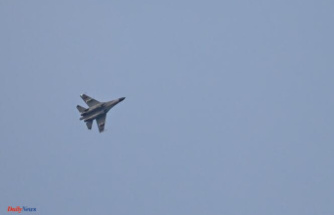In October of 2017, the astronomers detected something never seen until then: a shaped object of pure of 300 meters long from beyond the solar system that, in addition, showed experience changes in your acceleration. Finally, the hypothesis most accepted is that the object, which was ended by calling Oumuamua, is a comet interstellar is undergoing a process of release of gas that makes him change his movement. Whatever it was, Oumuamua walked away and disappeared from our view.
The scientists believe that this type of visit can be repeated: that, sometimes, comets or asteroids interstellar may enter the solar system, following orbits very different from those of the objects inside. That is why it is very important that the past 30 of August, the astronomer Ukrainian Gennady Borisov detected an object that could be the second visitor interstellar known , and named C/2019 Q4 (Borisov) , as reported by the European Space Agency (ESA) in a press release.
"On the basis of the available observations, the solution for the orbit of this object match" on a trajectory hyperbolic, "which would indicate an origin in interstellar," according to a circular of the International Astronomical Union (IAU).
the data collected so far indicate that the orbit of C/2019 Q4 (Borisov) is hyperbolic (very eccentric). Why is this interesting? Because this indicates that the object comes from outside the solar system, as the rest of the bodies that are dominated by the gravity of the Sun have nearly circular orbits (for planets) or ellipsoid (comets and asteroids).
After this sighting, astronomers from all over the world have pointed their telescopes on the object to try to learn more about its nature and orbit and to conclude if, indeed, it is a body of interstellar.
Orbit hyperbolic c/2019 Q4 (Borisov) - THIShowever, the feedback have been made while the object was near the horizon and the position of the Sun in the sky, two factors that decrease the accuracy of the measurements (the atmosphere distorts the observations and in the light of the star saturates the instruments). Therefore, we will have to wait some time to be able to accurately estimate the trajectory of C/2019 Q4 (Borisov) and make more measurements.
"we Need to wait a few days for pobar the hypothesis current that is interstellar, or maybe change completely our idea," said Marco Micheli, research fellow of the ESA.
it Seems that there will be plenty of time: "Except that it happens in a unexpected disappearance or disintegration, this object should be observable for at least a year ," according to the IAU.
If it is confirmed that this body is interesteler, after the discovery of Oumuamua in 2017, scientists have evidence that these visits are more frequent than previously thought.
An object of several kilometresBy the time, you already know that C/2019 Q4 is a comet several kilometers in diameter that is active, that is to say, releasing gas and dust due to the sublimation of ice under the effect of the solar radiation.
At this time, can only be observed in C/2019 Q4 for 20 minutes in the twilight, but in October we will be far enough from the Sun that telescopes like Hubble take a look. It is expected that in December to make its closest approach to the Sun, at a distance of 300 million kilometers from the star, so that it is possible to activate and build the tail and the coma typical of comets.
"This is the first object in interstellar that can be observed acting as a comet," he said in The New York Times Michele Bannister, astronomer at the University of Queen's in Belfast (United Kingdom). " might behave like comets, our sun, or not ".
Date Of Update: 15 September 2019, 04:00











